
DOKLADY PHYSICAL CHEMISTRY
Scope & Guideline
Elevating Knowledge in Physical and Theoretical Chemistry
Introduction
Aims and Scopes
- Catalysis and Reaction Mechanisms:
The journal includes extensive research on catalytic processes, including the development of new catalysts, reaction kinetics, and mechanisms, which are crucial for advancing chemical synthesis and environmental applications. - Materials Chemistry and Nanotechnology:
Research on the synthesis, characterization, and application of novel materials, particularly nanomaterials and composites, is a significant focus area, reflecting the journal's commitment to advancing material science. - Thermodynamics and Phase Equilibria:
Papers often address thermodynamic properties and phase diagrams, providing critical insights into material behavior under various conditions, which is essential for both theoretical understanding and practical applications. - Computational Chemistry and Machine Learning:
The use of computational methods, including molecular simulations and machine learning techniques, is increasingly prominent, highlighting the journal's engagement with modern computational approaches to solve complex chemical problems. - Biophysical Chemistry:
Studies exploring the interactions and behaviors of biological systems with chemical agents, including the effects of solvents and catalysts on biological activity, are also featured, indicating a bridge between chemistry and biological sciences.
Trending and Emerging
- Machine Learning and AI Applications:
The integration of machine learning and artificial intelligence in predicting chemical properties and behaviors is on the rise, illustrating a significant trend towards data-driven research methodologies. - High-Entropy Alloys and Materials:
Research focusing on high-entropy materials, particularly in relation to their mechanical and thermal properties, is gaining traction, signaling an interest in materials that exhibit unique characteristics due to their complex compositions. - Sustainable Catalysis and Green Chemistry:
There is an increasing focus on sustainable catalysis, including the development of catalysts that minimize environmental impact, which aligns with global shifts towards greener practices in chemistry. - Nano- and Micro-Scale Materials:
The investigation of nanomaterials and their applications in various fields, including electronics and medicine, is becoming more prevalent, reflecting advancements in nanotechnology. - Interfacial and Colloidal Chemistry:
Emerging research on interfacial phenomena and colloidal systems highlights the importance of these areas in understanding complex chemical behaviors and developing new materials.
Declining or Waning
- Conventional Organic Synthesis:
Research focused solely on traditional organic synthesis methods seems to be decreasing, as the journal leans more towards novel approaches and materials, including green chemistry and sustainable practices. - Low-Temperature Chemistry:
There appears to be a waning interest in studies exclusively focused on low-temperature chemical processes, possibly overshadowed by a broader focus on high-temperature and extreme conditions that yield more impactful results. - Basic Polymer Chemistry:
While polymer chemistry remains a topic of interest, basic studies without novel applications or advanced methodologies are less commonly featured, indicating a shift towards more application-oriented research. - Explosives and Propellant Chemistry:
The frequency of papers addressing explosives and propellant chemistry has diminished, possibly due to safety concerns and regulatory changes that have shifted focus to more environmentally friendly materials. - Classic Thermodynamics:
Research that strictly adheres to classical thermodynamic principles without innovative applications or intersections with modern computational techniques appears to be less frequent, reflecting a trend towards integrating traditional and contemporary approaches.
Similar Journals
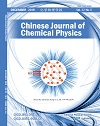
CHINESE JOURNAL OF CHEMICAL PHYSICS
Fostering Collaboration in the World of Chemical PhysicsChinese Journal of Chemical Physics, published by the Chinese Physical Society, serves as a pivotal platform for advancing the field of chemical physics, encompassing groundbreaking research and innovative methodologies since its inception in 2000. With an ISSN of 1674-0068 and E-ISSN of 2327-2244, the journal has established itself within the academic community, reflected in its 2023 classification as Q3 in Physical and Theoretical Chemistry and a Scopus rank of #142 out of 189, representing the 25th percentile in this competitive field. Although it does not currently operate as an open-access publication, its commitment to disseminating pivotal scientific research continues to attract scholars and professionals alike. The journal aims to bridge the gap between theoretical principles and practical applications in chemical physics, thereby fostering collaboration and innovation. By contributing significantly to the discourse in this dynamic domain, the Chinese Journal of Chemical Physics remains an essential resource for researchers, professionals, and students eager to stay abreast of contemporary developments.
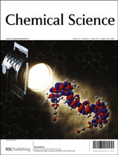
Chemical Science
Catalyzing Breakthroughs in Chemical ScienceChemical Science, published by the esteemed Royal Society of Chemistry, is a leading open-access journal that has been a pivotal platform for disseminating high-quality research in the field of chemistry since its inception in 2010. With an impressive Impact Factor and ranked in the Q1 category of Chemistry (miscellaneous) and holding a distinguished rank of #34 out of 408 in General Chemistry according to Scopus, it is widely recognized for its rigorous peer-review process and innovative contributions to the discipline. The journal embraces a global readership by providing an open-access model since 2015, thereby making vital scientific advancements accessible to researchers, professionals, and students alike. Covering various branches of chemistry, Chemical Science aims to publish original research articles, reviews, and communications that advance our understanding and application of chemical sciences. With its commitment to excellence and its continued relevance in a rapidly evolving field, Chemical Science is an indispensable resource for anyone engaged in chemistry research and education.

Central European Journal of Energetic Materials
Pioneering Research in Energetic MaterialsWelcome to the Central European Journal of Energetic Materials, a distinguished publication in the field of energetic materials, published by the INST INDUSTRIAL ORGANIC CHEMISTRY in Poland. This journal, with ISSN 1733-7178, has been a vital platform for researchers since its inception in 2009, promoting the latest advancements and discoveries in the dynamic fields of Materials Chemistry and Organic Chemistry. With an admirable presence in the academic community, it boasts a Q3 ranking in Materials Chemistry and a Q4 ranking in Organic Chemistry for 2023, showcasing its contribution to foundational research despite competitive challenges. Researchers looking to disseminate their findings will find this journal a reputable venue, supported by rigorous peer-review processes and a commitment to open dialogue within the scientific community. The journal is pivotal for academics, professionals, and students interested in the synthesis, characterization, and application of energetic materials, making it a notable resource for understanding the complexities and innovations within this specialized domain.

CCS Chemistry
Showcasing Excellence in Chemical Science and InnovationCCS Chemistry, published by the esteemed Chinese Chemical Society, is a leading open-access journal dedicated to advancing the field of chemistry. Since its inception in 2019, the journal has rapidly gained recognition, achieving a remarkable impact factor that places it in the prestigious Q1 category in Chemistry (Miscellaneous) as of 2023. With a Scopus ranking of #41 out of 408 in General Chemistry, CCS Chemistry represents the top 10th percentile in its category, reflecting its commitment to high-quality research and innovation. The journal serves as a vital platform for researchers and professionals to share their findings, showcase cutting-edge methodologies, and engage with the latest developments in various chemistry subfields. Accessible to a global audience, CCS Chemistry ensures that groundbreaking research is available without barriers, making it an indispensable resource for students and academics aiming to stay at the forefront of chemical sciences. For further details, submissions, and access to published articles, please visit the journal's website.
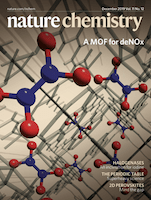
Nature Chemistry
Transforming Ideas into Chemical Solutions.Nature Chemistry is a prestigious journal published by NATURE PORTFOLIO, focusing on groundbreaking research in the realms of chemistry and chemical engineering. Since its inception in 2009, this esteemed publication has garnered significant recognition, currently ranking in the Q1 category for both Chemical Engineering and Chemistry (miscellaneous) as of 2023. With an impactful presence, it ranks 4th out of 273 in General Chemical Engineering and 9th out of 408 in General Chemistry, placing it within the top 2% of journals in its field. Nature Chemistry aims to publish high-quality, peer-reviewed articles that advance our understanding of chemical science and its applications, catering to an audience of researchers, professionals, and students eager to explore innovative discoveries. While it offers various access options, dedicated readers appreciate its contribution to the scientific community from its base in Berlin, Germany.

RUSSIAN CHEMICAL REVIEWS
Fostering Collaboration in the World of ChemistryRUSSIAN CHEMICAL REVIEWS, published by the esteemed ND Zelinsky Institute of Organic Chemistry, RAS, stands as a prominent platform for disseminating high-quality research in the diverse field of chemistry. With an ISSN of 0036-021X and an E-ISSN of 1468-4837, this journal has earned its place in the Q1 quartile of Chemistry (miscellaneous) for 2023, reflecting its outstanding impact and rigorous peer-review process. The journal encompasses a wide array of topics within chemistry, providing critical reviews that advance understanding and foster collaboration among researchers, professionals, and students globally. With its consistent publication since 1970, RUSSIAN CHEMICAL REVIEWS not only serves as a valuable resource for the latest advancements in the field but also plays a crucial role in shaping future research directions. The journal is based in the Russian Federation, with its office located at 47 Leninsky Pr, Moscow 119991, RUSSIA. As an essential reference for those in the chemical sciences, it provides an ideal avenue for authors looking to publish impactful reviews that contribute to the broader scientific community.
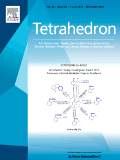
TETRAHEDRON
Elevating scientific dialogue with rigorous peer-reviewed research.TETRAHEDRON, published by Pergamon-Elsevier Science Ltd, is a leading peer-reviewed journal that has been pivotal in advancing the fields of Biochemistry, Drug Discovery, and Organic Chemistry since its inception in 1957. With an ISSN of 0040-4020 and an E-ISSN of 1464-5416, this journal provides a platform for the dissemination of cutting-edge research and innovative methodologies that contribute significantly to the scientific community. Recognized for its rigorous editorial standards, TETRAHEDRON has been categorized in the Q3 quartile for 2023 across its relevant fields, reflecting its solid impact within the scientific sphere. Despite the current absence of Open Access options, the journal continues to engage a diverse readership, offering invaluable insights and advancements that fuel both academic and industrial applications. With an ongoing commitment to excellence, TETRAHEDRON remains an essential resource for researchers, professionals, and students aiming to stay at the forefront of chemistry and biochemistry research.

Chemistry-Switzerland
Empowering Innovation Across Chemistry DisciplinesChemistry-Switzerland is an esteemed, fully Open Access journal published by MDPI, dedicated to advancing research in a broad spectrum of chemistry disciplines. Launched in 2019, the journal has established itself within the academic community, particularly as it spans critical areas such as inorganic and organic chemistry, as well as electrochemistry. Recognized for its contributions, it has achieved notable rankings, including Q2 status in Chemistry (miscellaneous) and Inorganic Chemistry, and Q3 standing in Electrochemistry and Organic Chemistry for 2023. With a commitment to disseminating high-quality research, Chemistry-Switzerland serves as an invaluable resource for researchers, professionals, and students aiming to share their discoveries with a global audience. Located in Basel, Switzerland, this journal facilitates seamless access to cutting-edge research, fostering innovation and collaboration within the vibrant field of chemistry. With this dynamic platform, the journal aims to continue its trajectory of growth and impact, inspiring the next generation of chemists.
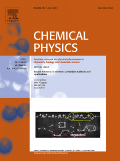
CHEMICAL PHYSICS
Advancing the Frontiers of Theoretical and Experimental Chemistry.CHEMICAL PHYSICS is a premier international journal published by Elsevier, dedicated to advancing the field of theoretical and experimental chemistry, particularly within the physical domain. Since its inception in 1973, this journal has served as a platform for disseminating cutting-edge research, fostering collaboration among researchers and professionals in the community. With a notable impact factor and recognized in the Scopus rankings, CHEMICAL PHYSICS holds esteemed positions in two categories: Q3 in Physical and Theoretical Chemistry and Q2 in Physics and Astronomy (miscellaneous). Published in the Netherlands, the journal features high-quality articles that cover a broad spectrum of topics, aiming to deepen understanding of chemical phenomena through innovative approaches. Although open access options are not currently available, the journal remains invaluable for researchers, students, and professionals seeking to stay informed about the latest developments in chemical physics. With convergence years extending from 1973 to 2025, CHEMICAL PHYSICS continues to be a significant contributor to the academic discourse in its field.

CHEMICAL JOURNAL OF CHINESE UNIVERSITIES-CHINESE
Elevating Scholarly Dialogue in Chemistry.CHEMICAL JOURNAL OF CHINESE UNIVERSITIES-CHINESE, published by Higher Education Press, serves as a vital platform for advancing research in the field of chemistry. With a history dating back to 1996, this journal has evolved to encompass a wide range of topics fundamental to the chemistry community, catering to both applied and theoretical perspectives. Although classified in Quartile 4 within the broader chemistry category, it remains a significant contributor to the knowledge base, ranking 281st out of 408 journals in the general chemistry category according to Scopus. Positioned in Beijing, China, the journal aims to foster collaboration among researchers and professionals while disseminating innovative research and developments. By promoting open exchange of ideas in chemistry, it strives to elevate the scholarly dialogue and contribute to ongoing education for students and professionals alike, with its content accessible through institutional subscriptions.